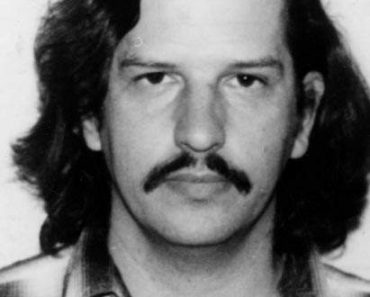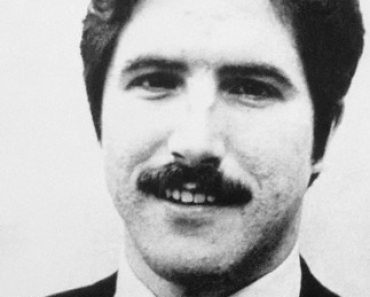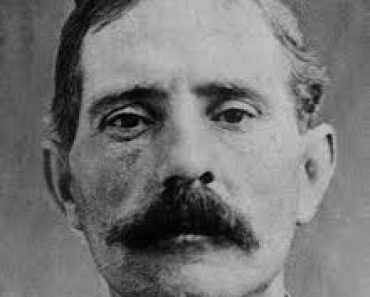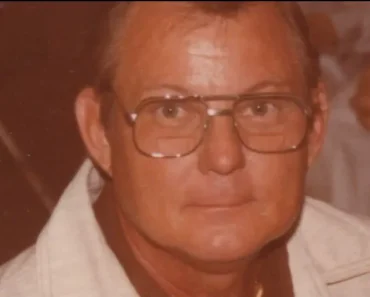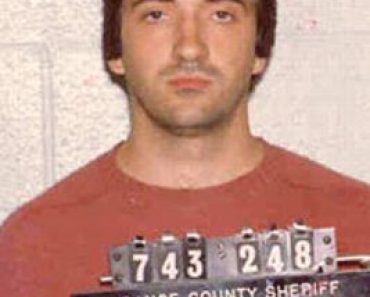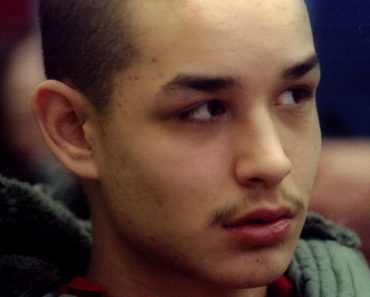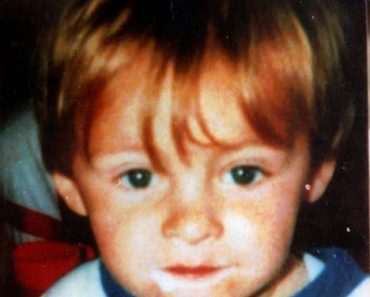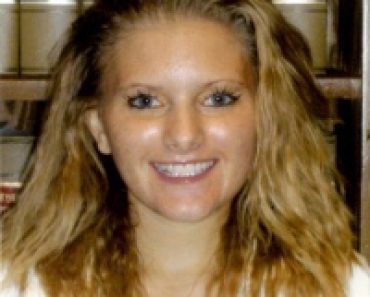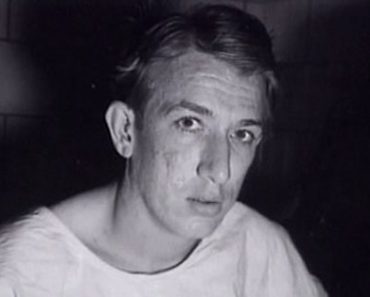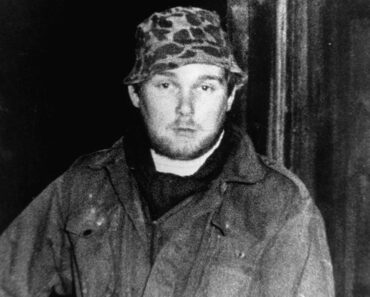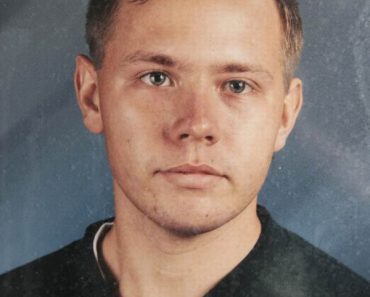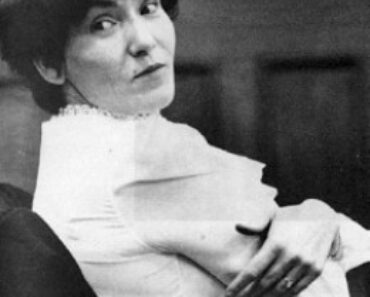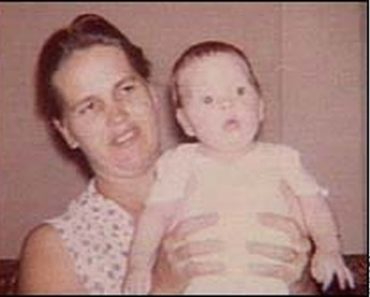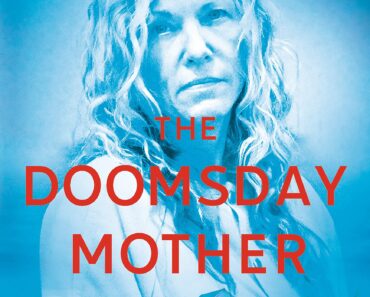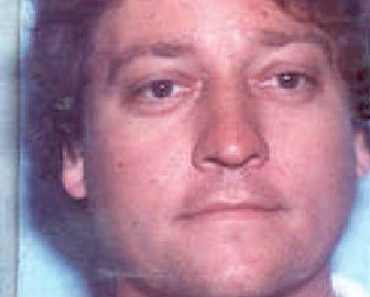Robert Lee Yates Jr. | Serial Killer

Robert Lee Yates Jr.
Born: 05-27-1952
Spokane Serial Killer
American Serial Killer
Crime Spree: 1975–1998
Incarcerated at the Washington State Penitentiary.
The First Bodies of Robert Lee Yates Jr. – The stark realization, that the deaths of seven women since late summer 1997, four of whom were killed during the year’s final weeks, was the work of a serial killer, renewed fears among the public and law enforcement officials alike that the infamous and elusive Green River Killer had found a new killing ground in and around Spokane, Washington. It was only talk and speculation, fueled in large part by the numbers of bodies being found and the fact that many of the victims were prostitutes.
A Different MO
The talk and speculation was only quelled by the fact that the killer’s method of operation was markedly different from that of the Green River Killer. Nonetheless, it was a possibility that had to be considered, at least initially, given the fact that serial killers have, on occasion, changed their M.O.s. Disturbingly, the number of bodies would more than double before they stopped, and many others would be attributed to the same killer.
The first indication that a serial killer was at work in and around this eastern Washington city began on February 22, 1990, at approximately 8:30 a.m., when the homicide division of the Spokane Police Department was called to the 4100 block of East Upriver Drive on a report of a young black female whose nude body was lying over the embankment near the Spokane River.
The responding officers, and later the detectives, observed that the young woman had been shot a number of times, and the size of the entrance wounds suggested a small caliber gun had been used. An extensive search of the area failed to turn up any of the victim’s clothing or personal effects.
Moved Bodies
The search also failed to turn up any bullets or spent shell casings, an indication that either the killer took care in cleaning up after himself, used a gun that did not eject shell casings, or killed the victim at a different location and then transported the body after death. All that was found with the body was the victim’s black wig, a green blanket like those used in the military, a multi-colored blanket and a white towel.
After some of the details of the discovery of the victim’s body were made public, the victim was identified as 26-year-old Yolanda Sapp. The investigators soon learned that Sapp had a history of prostitution arrests and was known to use drugs. She was last seen two days before her body was found in the 3200 block of East Sprague, an area frequented by prostitutes and pimps.
At that time she had been wearing black jeans, black slip-on flat-soled shoes, black panties, a black t-shirt, and a beige rabbit fur coat, none of which was found with her body. After interviewing those who were close to her, police determined that nine bracelets were missing from her wrists, as was a silver chain necklace, two rings (one of which was a wedding ring), and a jean or denim purse. As would be done with all of the victims, hair and fiber samples were taken during autopsy, as were oral, anal, and vaginal swabs.
Another Body Found
A little more than a month later, another body was found. This time, on Sunday, March 25, 1990, the Spokane Police Department was called to the 3200 block of East South Riverton regarding a report of a body found in the road shortly after 6 a.m. The victim was a white female, and it was clear that she had been shot to death.
She was eventually identified as 34-year-old Nickie I. Lowe who, like the previous victim, had a history of prostitution and drug abuse. Lowe was last seen a day earlier in the East Sprague area of Spokane. During Lowe’s autopsy, a .22-caliber bullet was retrieved from her body relatively intact, and it was noted that a strong odor of motor oil emanated from her body. Toxicology tests results confirmed the presence of cocaine and cocaine metabolites in Lowe’s body.
Although the detectives investigating the murders of Yolanda Sapp and Nickie Lowe were reasonably certain that both women had been done in by the same killer, little headway was made in the investigation over the next seven weeks and no additional bodies were found, leaving investigators wondering whether their killer had moved on to another locale or was just lying low for awhile. However, they weren’t left wondering for long.
Another Lay Dead
On Tuesday, May 15, 1990, at approximately 7:45 p.m., the Spokane County Sheriff’s Department responded to a report of a body found in the Trent and Pines area near the banks of the Spokane River. The victim was a white female, and was nude except for rings on her fingers. She also had contusions and lacerations to the head, prompting the investigators to believe that she had been beaten with a blunt object. They also observed gunshot wounds.
Crime scene investigators recovered articles of female clothing from the scene, as well as a pair of shoes, a plastic bag stained with blood, a cigarette butt, and vegetation samples. This time, however, they also found tire tracks, the tire tread patterns, which were carefully photographed.
The latest victim was identified as Kathleen Brisbois, 38. Bullets were recovered from her body during the autopsy, and trace evidence such as hair and fiber was collected and sent to the state crime laboratory. Toxicology tests revealed the presence of morphine and cocaine metabolites in Brisbois’ body, indicating that she had used cocaine, and most likely heroin, prior to her death. Investigators believed that she had been engaged in prostitution activities at the time of her death.
By now, because of the similarities of the victims’ deaths, the fact that a small caliber gun was used, and the fact that all were engaged in prostitution left little doubt in the investigators’ minds that they were dealing with a bonafide serial killer. Just when and where he would strike next was anybody’s guess. In the meantime, they were not anywhere close to identifying the killer, and everyone realized that he could leave a large number of bodies in his wake before being apprehended.
Two Years Later
Two days short of two years passed without any additional victims being found that could be attributed to the Spokane serial killer. By the time the fourth victim came to the attention of the police, the investigators probing the original case didn’t know if the killer had moved on to another locale to carry out his dark deeds or if he had merely been more careful in hiding his victims’ bodies. Investigators opted for the theory that the killer had been murdering women during the two-year interim in another locale.
The awareness that the killer had started up again in Spokane came about on Wednesday, May 13, 1992, when a nude female body was found on Bill Gulch Road, about a quarter mile east of Mt. Spokane Park Drive. Articles of clothing were tangled in the area of the victim’s arms and head, and a plastic bag covered her head. As with the previous victims, shoes and other clothing articles were found near the body.
Criminologists found what they believed to be a bullet near the body, but no spent shell casings. There was no sign of a struggle and no significant blood pooling in the area of the body, which indicated to the cops that the victim had been killed at a different location and brought to the site and dumped.
The Youngest Victim
As with the others, the cause of death was determined to have been gunshot wounds. Bullets were again obtained from the victim’s body, along with hair, fiber, and orifice swabs. The Caucasian victim was identified through fingerprint analysis as Sherry Anne Palmer, 19, the youngest victim to date.
Subsequent follow-up investigation determined that Palmer had last been seen leaving Al’s Motel, known for its use by prostitutes and their johns, located at 1421 N. Division in Spokane, on Friday evening, May 1, 1992. Detectives learned that she had left the motel in a taxicab at approximately 11 p.m. to meet her boyfriend. However, she never arrived at the location where he was to meet her. Although she had a history of involvement in prostitution, Palmer was not known to use illicit drugs.
More than three years passed before the next victim attributed to the Spokane Serial Killer was found. By this time, Spokane investigators were communicating with their colleagues in other locales to try and come up with anything that would link the victims to a suspect. Unfortunately, all they had were victims linked by histories of prostitution who had all been killed similarly by gunshot with a small caliber weapon and whose nude bodies had been dumped at various locations.
Different Locales
With the latest victim on the other side of the state, in Kitsap County northwest of Seattle, linked to the Spokane serial killer, the investigators now knew that he was working in different locales. The fact that the latest victim was found in western Washington also renewed fears that the Green River Killer might still be at work.
It was on Friday, August 25, 1995, that the nude body of 60-year-old Patricia L. Barnes, a white woman, was found in the vicinity of the 15900 block of Peacock Hill Road in Kitsap County. Kitsap County Sheriff’s Department Detective Ron Trogdon was called to the scene, where he observed that the body was partly covered with cut foliage brought there from a different area. Trogdon located a number of hair curlers at the scene, but little else.
However, he found a second pile of foliage similar to that where Barnes’ body was found about a mile from the body discovery site. When the criminologists went through the second foliage pile they found two plastic bags that contained hair curlers like those found with the body. Blood was also found at the second location that was later determined to be Barnes’.
The Oldest Victim
Trogdon’s follow-up investigation showed that Barnes, so far the oldest victim of the Spokane serial killer, was last seen alive in Seattle on or about August 22, 1995, and was seen wearing curlers in her hair at that time. Barnes was characterized as a street person, but had no known links to prostitution or use of illicit drugs. She was known to drink alcohol, which was found in her system during autopsy.
The autopsy also recovered two .22-caliber bullets from her body. Based on the evidence that was recovered, the victim’s lifestyle, ballistics, the manner in which her nude body was found and the fact that it appeared that Barnes had been killed at a different location and her body subsequently transported and dumped at the location where it was found, prompted Trogdon to contact Detective Marvin R. Hill, assigned to the Spokane Police Department’s serial killer task force. When the evidence and Barnes’ background was compared to that of the Spokane victims, there was little room for doubt that both Trogdon and Hill were looking for the same killer.
More Bodies
The horror that was taking its toll on the eastern Washington city of Spokane re-emerged ten months after the Kitsap County case. On Friday, June 14, 1996, the decomposed body of 39-year-old Shannon R. Zielinski was found near the intersection of Mt. Spokane Park Drive and Holcomb Road in Spokane.
Unlike previous victims, who had all been found nude, Zielinksi was clad in a short gray dress. According to Detective Hill, a towel had been draped over her torso, and a pair of pantyhose, a pair of white socks, and one high black boot was discovered nearby.
There was no purse or identification found at the scene, and Zielinski’s identity was learned following fingerprint analysis. A shell casing was discovered at the scene and, like the others, there was little blood pooling and no sign of a struggle, all of which indicated that she had been killed at a different location. Like all the others, she had been shot to death.
As Detective Hill probed Zielinski’s background, he learned that she had known links to prostitution and was known to use illicit drugs. However, due to the decomposed condition of her body, toxicology tests were not possible.
Then There Were Two
Zielinski was last seen on May 27, 1996, at approximately 1 p.m., in the vicinity of Sprague and Helena streets in Spokane. At that time she was seen drinking alcohol with a group of males and was contacted by a police officer, but not arrested.
According to witnesses, Zielinski left a nearby residence that same evening to work as a prostitute. She was wearing the same gray dress and high black boots, and was not seen again until her body was discovered.
Tuesday, August 26, 1997, more than a year after Shannon Zielinski’s body was found, was a busy day for Spokane detectives when two bodies were discovered. The first body found that day was that of 20-year-old Heather L. Hernandez, a known prostitute. Hernandez’ decomposing remains were found in a field behind 1817 E. Springfield in Spokane, clad only in a shirt and bra.
There was no other clothing, shoes, purse or identification found with the body. Detective Hill observed a visible trail of blood that led from the northeast portion of a parking lot to the field where her body was found, showing that her body was dragged to its final location. She had been killed by gunshot.
Robert Lee Yates Jr
In another location Detective Rick Grabenstein, also a member of the Spokane serial murder task force, investigated the discovery of the body of an Asian female near the north 9800 block of Forker Road. The body was later identified through fingerprints as 16-year-old Jennifer Joseph.
Crime scene investigators recovered a light blue towel, a blouse that was missing a mother-of-pearl button, black full-length pants, two shoes, panties, a portion of a radio antenna, and a used condom. Like all of the others, the investigation suggested that she had been killed at another location and transported to the area where her body was found. The cause of death: multiple gunshot wounds.
It was noted during the autopsy that Joseph’s fingernails and toenails were painted with a polish that contained glitter, fragments of which were found on other parts of her body. Three stud-type earrings with small pale stones were present in her left ear, but only two were found in her right ear, indicating that one was dislodged during the ordeal with her killer. Similarly, one false eyelash was missing from her body, indicating that it likely came off during the incident with the killer.
Grabenstein determined that another prostitute who had been working with her in the East Sprague area last saw Joseph alive at 11:35 p.m. ten days earlier, on August 16. The prostitute last saw Joseph traveling eastbound on Thor in the company of a white male, approximately 30 to 40 years old, in a car believed to have been a white Corvette. The car, it turned out, would be the first real lead in the case that tied any of the victims to a suspect.
A Suspect Emerges
While the investigation into the prostitute murders was in full swing, with detectives and undercover officers frequenting those areas where prostitutes were known to work, a police officer on routine patrol made the first contact with Robert L. Yates, Jr., 45.
Yates, driving a 1977 white Corvette with Washington license plate KIH442, was stopped for a minor traffic infraction at 12:45 p.m. on Wednesday, September 24, 1997 in the vicinity of Sprague and Ralph. Robert was ticketed and allowed to proceed.
However, the connection between Yates’ Corvette and the murder of Jennifer Joseph was not noted immediately because the patrolman had mistakenly written in his report that Yates had been driving a Camaro. The connection was not noted until later, after the task force checked the “Camaro’s” registration and learned that it was actually a Corvette. In the meantime, the bodies continued to pile up.
Decomposing Corpse
On November 5, 1997, a Wednesday, a local resident stumbled upon a decomposing corpse in the vicinity of South 12600 Hangman Valley Road. The body, in an obvious attempt to conceal it, had been buried in a shallow grave, and was located near a small stream. No clothing, with the exception of a blouse, was recovered.
The corpse was later identified as Darla Sue Scott, 29, who had an extensive history of prostitution and drug arrests. Scott had been shot, possibly with a .25-caliber or smaller caliber gun. A plastic bag with handwriting on it was recovered with Scott’s body, as was a second “grocery type” plastic bag. A Styrofoam “packing peanut” was found nearby in the road.
Meanwhile, a month later, another body was found in the western part of the state. On Sunday, December 7, 1997, the Tacoma, Washington police department responded to a call of a body found in the 5000 block of South Adams Street at 1:30 p.m.
Plastic Bags
The woman’s body was nude, and was found partially obscured by brush near the road. What was believed to be the victim’s clothing was strewn over her body, and plastic bags covered her head. A .25-caliber spent shell casing was recovered from the scene. The body was subsequently identified as that of 34-year-old Melinda L. Mercer.
Missing from the crime scene was a large green purse that Mercer was known to carry, as well as several costume jewelry type rings. The missing items of Mercer’s, as well as the numerous items not recovered from other victims, prompted the detectives to theorize that the killer had kept some of his victims’ belongings as trophies or souvenirs of his “kills.”
The Tacoma investigators learned that Mercer was last seen during the late evening hours of December 6 in the parking lot of a QFC grocery store in the 1800 block of Northeast 45th Street in Seattle in the company of a man driving a newer, burgundy colored minivan. Mercer had a history of prostitution and drug abuse, and toxicology tests revealed that she had used cocaine and opiates prior to her death. The autopsy showed that she died from gunshot wounds.
Those Damn Bags
Another body was found on Wednesday, December 17, 1997, a week before Christmas, in the same area of Spokane where Darla Sue Scott’s body had been found in November, this time in the 11400 block of Hangman Valley Road. The body, which was fully clothed but had plastic bags placed over the head, had been tossed over the side of a steep embankment where it rolled down the hill and came to rest about 25 feet from the edge of the road.
Crime scene investigators recovered a number of hairs and fibers, which were sent to the state crime laboratory for processing. She had been shot to death. The body was later identified as that of 36-year-old Shawn L. Johnson, who was last seen leaving a home in northeast Spokane two months earlier, on the evening of October 17, to work as a prostitute in the East Sprague area.
Johnson was supposed to have called her roommate later on the evening that she disappeared, but she failed to do so and was not seen again until her body was found. Although Johnson’s vehicle was found in a K-Mart parking lot on East Sprague on October 19, reported as abandoned by a store employee, it was not taken as evidence by authorities until December 23, after her body had been found and it had been determined that she was a victim of the elusive serial killer. It was processed for evidence and a number of items were recovered, including hairs and fibers.
Body Count Continues
Two more Caucasian female bodies were found the day after Christmas, Friday, December 26, 1997, in the 4800 block of East 14th Avenue in Spokane. Unlike many of the previous bodies, these two were fully clothed—except that they were both missing their shoes.
Both of the bodies were covered with debris from a wide variety of vegetation alien to the area—lace leaf maple, Arbor Vitae, birch, rose, hydrangea, Oregon grape, maple, honey locust, forsythia, Japanese barberry, Chrysanthemum, among others.
In addition to the vegetation, crime scene investigators recovered soil, rocks, concrete pieces, wood pieces, white paint chips, a red dyed feather, peanut shells, cherry pits, and a plastic plant identification tag like that found on a plant at a nursery that read “Sweet William.”
The bodies were identified as Laurel A. Wason, 31, and Shawn A. McClenahan, 39. Each of the victims had three plastic bags over their heads, and autopsies showed that each had been shot to death. As with all of the other victims, the site where their bodies were found was believed to have been only a dumping site after their murders occurred elsewhere.
Robert Lee Yates Jr
It was also determined that Laurel Wason was wearing a black trench coat when last seen, and Shawn McClenahan was wearing a blue nylon coat. Both coats were missing from their bodies and were not recovered. Were these additional trophies for the killer to savor? The police could only guess at this point.
Since it appeared that a substantial attempt had been made to conceal the bodies, along with the fact that a large variety of debris and plant material was used, the investigators theorized that the debris and plant material may have been brought from the suspect’s home or other place that he had access to.
They noted that when a suspect was eventually identified, comparisons of the vegetation and debris material could be made with that found at the suspect’s premises and could prove important in forming a link between the perpetrator and the dumpsite locations.
On Sunday, February 28, 1998, two full months into the new year, a white female body was discovered in a ditch on Graham Road in a rural area of Spokane County. The body was identified as that of 41-year-old Sunny G. Oster, a known prostitute and drug user. Oster’s body was fully clothed, and a pair of shoes had been discarded near the body. Oster died of gunshot wounds, and three plastic bags had been placed over her head.
Taking Trophy’s
The last time anyone saw Oster alive was on November 1, 1997, while she was working as a prostitute on East Sprague. She had been carrying a beige purse, which was not located and which police believe may have been taken as a trophy.
On Wednesday, April 1, 1998, the body of 34-year-old Linda M. Maybin was found in the 4800 block of East 14th Avenue only a short distance from where the bodies of Laurel Wason and Shawn McClenahan were found the previous December.
Similar to Wason and McClenahan, Maybin’s body had been covered with vegetation that did not grow in that area and consisted of many of the same species previously found there, bolstering the investigative theory that perhaps the plant material had been brought from the perpetrator’s home. Maybin’s body was fully clothed, and there were remnants of plastic bags in the area of her head. The body was badly decomposed, and animals had disturbed it. It was obvious that it had been there for some time.
Cluster Dump
The animal damage and degree of decomposition fit the time Maybin was last seen, which had been on November 21, 1997 when she had been contacted by a police officer on East Sprague. It was possible that she had been seen the following night, but that could not be confirmed.
She was reported missing on November 29, 1997 by a Spokane County Health District employee that works with prostitutes. The fact that Maybin’s body was found in such close proximity to where Wason’s and McClenahan’s bodies were found prompted investigators to believe that the killer was using the site as a cluster dump site. However, an exhaustive search of the area failed to turn up any additional bodies.
Additional investigation showed that Maybin was known to use illicit drugs, particularly crack cocaine. Acquaintances told the police that she usually carried a pipe for smoking crack tucked inside her pants in her pelvic region. However, the pipe was not found—only a folded paper towel was recovered from this area of her body. She was also known to carry a velvet, drawstring bag like that sold with Crown Royal whiskey, but this, too, was missing from her body.
Robert Lee Yates Jr
On Tuesday, July 7, 1998, a white female body was found in a vacant lot near 218 N. Crestline in Spokane. It was subsequently identified as that of Michelyn J. Derning, 47, who had a history of prostitution and was last seen on July 4, 1998 in Spokane. Derning’s body had been covered with grass.
A piece of Styrofoam and two hot tub covers also covered her, which, the detectives determined, had come from a pile of debris in the vacant lot. Derning’s body was nude, and her lower denture, engraved with her name, was missing from her mouth. Cause of death was gunshot wounds, and a toxicology examination revealed the presence of methamphetamine in her body.
On Tuesday, October 13, 1998, the body of 35-year-old Connie L. Ellis, also known as Connie L. LaFontaine, was found in the vicinity of the 1700 block of 108th Street South, in Tacoma. When the Pierce County Sheriff’s Department responded, they found that the body was badly decomposed, had three plastic bags placed over the head, and the victim had sustained a gunshot wound to the head.
Body Count 17
A 9mm caliber bullet was found at the scene, but follow-up investigation revealed that Ellis carried a small gun capable of firing a 9mm bullet, prompting the investigators to believe that the bullet found at the scene had belonged to Ellis and not her killer. Ellis’ gun was not found. Like all of the others, Ellis was known to be involved in prostitution and drug usage.
Because of the ongoing investigations of murdered prostitutes in several counties that were obviously linked to the Spokane serial killer, who was clearly traveling across the state to carry out his murders, Pierce County detectives promptly notified the Spokane cops of their discovery. The discovery of Ellis’ body brought the official body count attributed to the Spokane Serial Killer to 17. There were likely many others that were not yet found or linked to the elusive killer.
Evidence
Firearm examination evidence from the cases of Nickie Lowe and Kathy Brisbois, conducted by Gaylan Warren of the Columbia International Forensic Laboratory, showed that those two cases were without question related. It was Warren’s opinion that the same-.22-caliber weapon, most likely a handgun, killed Lowe and Brisbois. Warren further determined that Sherry Palmer had been shot with a .32-caliber firearm which, in his opinion, was most likely a semi-automatic pistol.
The Washington State Patrol Crime Lab examined ballistics evidence in the case of Patricia Barnes, and the .22-caliber bullets found in her body had been too badly damaged from passing through tissue and bone and had been rendered useless for comparisons under a microscope.
Although it was possible, even likely, that the bullets had been fired from the same gun that was used to kill Lowe, Joseph, and Brisbois, their uselessness made it impossible to conclusively make that determination.
Similarly, the firearms evidence in the Zielinski case, as well as several of the other cases, was deemed inadequate for comparison with other bullets and bullet fragments recovered from the other victims.
The Same Weapon
Although forensic scientist Ed Robinson of the Washington State Patrol Crime Laboratory determined that Zielinski had been shot with a .25-caliber weapon, most likely a semi-automatic pistol, he was unable to determine whether any of the other victims that had been shot with a .25-caliber weapon had been shot with the same gun. Robinson was able to determine that Magtech, a brand that had limited availability within the state, manufactured the bullets recovered from Zielinski’s body.
The firearms evidence in the Hernandez, Wason, Maybin, Johnson, McClenahan, Oster, and Ellis cases showed that the victims had been shot with a .25-caliber weapon, most likely a semi-automatic pistol. Ballistics comparisons of the bullets from each of those cases showed that all of the bullets had been fired from the same gun, with the exception of the bullets recovered from the bodies of Hernandez and Ellis.
The bullets recovered from Hernandez’ and Ellis’ bodies had similar characteristics as the bullets recovered from the other aforementioned cases, but they could not be linked conclusively as having been fired from the same gun. It was pointed out to the investigators that the ammunition used in the Hernandez case was identified as Magtech brand, the same brand of bullet that was used to kill Zielinski, but the bullets used in the Ellis case was of a different brand, similar to Remington or Winchester.
Human Hair
The firearms evidence in the Mercer case was compared with the evidence from the other cases. The bullets were determined to be Magtech brand again, and it was determined that the bullets that killed Mercer were fired from the same gun that killed several of the other victims.
The firearms evidence in the Derning murder included a .25-caliber CCI brand cartridge case that matched general characteristics of those found in the Mercer case, indicating that Mercer and Derning had been killed by bullets fired from the same gun. However, the evidence linking those two cases only bore similarities, and it was not conclusively shown that bullets fired from the same gun had in fact killed both women.
The detectives learned that the hair and fiber evidence found on and around each of the victims’ bodies came from a wide variety of sources. For instance, cat hair, deer or elk hair, and foreign human hair was found on Sapp’s body. Similarly, human hair not belonging to the victim was found on Lowe’s body, and cat and foreign brown human hair was found on Brisbois’ body.
A cat hair was found in McClenahan’s bra, and black and burgundy dyed animal hair was recovered from Barnes’ body. One Mongoloid pubic hair and one Negroid body hair was also found on Barnes’ body. Several short, light brown Caucasian head hairs were found on the blue towel recovered with Asian victim Jennifer Joseph’s body. In addition to the hair evidence, a variety of acrylic and acetate fibers of varying colors were also found on the victims’ bodies.
Enter DNA
Specimens taken during autopsy from the orifices and cavities of Scott, Johnson, Wason, McClenahan, Mercer, Derning, and Oster revealed the presence of human sperm, as did the condom recovered from Maybin. DNA typing of the sperm evidence showed that it belonged to the same person.
Although in many of the cases the bodies were too decomposed to obtain useable samples, the DNA typing was a major breakthrough that would enable the investigators to conclusively link several of the murders to a single suspect once, of course, a suspect was apprehended and samples of his blood was obtained for purposes of comparison.
Since it is common knowledge that a prostitute is normally paid for their services in advance, each of the victims in this case should have had at least some money on their person at the time of their deaths. The fact that none of them did, coupled with the fact that purses, identification, and wallets were also missing, indicated that each woman had been robbed either before or after being murdered.
Robert Lee Yates Jr
On Tuesday, November 10, 1998, the Spokane serial killer task force operatives were out in numbers as they had been for some time now. It had been less than a month since Connie Ellis had been killed on the other side of the state, and based on the killer’s prior activities the cops knew that it would be only a matter of time before he struck again.
It was 1:25 a.m. when Spokane officers observed a man driving a silver 1985 Honda Civic, Washington license plate identification 918AJH, pull over and pick up known prostitute Jennifer Robinson on the corner of 1st and Crestline, another area of Spokane well known to be frequented by working prostitutes. The officer identified the driver of the Honda Civic as Robert L. Yates, Jr., and his encounter that evening would be the second time his name came up during the task force investigation.
When Yates was confronted by the police officer, he told the officer that he had been instructed by Jennifer Robinson’s father to drive to the area, find his daughter, and bring her home. With Robinson acknowledging that she knew Yates, there was little that the officer could do. Unable to hold either one of them, the officer took a field report of the incident, which made its way to the task force. Robinson probably didn’t realize it at the time, but she was one of the lucky ones.
A Look Back
As the investigation into the prostitute murders slid forward into 1999, task force detectives became aware of a report that had been filed on August 1, 1998. According to the report, 30-year-old Christine L. Smith had been the victim of an assault and robbery while working as a prostitute on East Sprague.
According to what Smith told the police, she had been picked up by a “date” near East 124 Short Street driving a 70’s model black van with orange coloring on the passenger side exterior. She described the van as having dark brown vinyl seats, with a wood framed bed with a mattress in the back.
Christine described the driver as a white man, approximately 50-years-old, about 5’10” tall, 175 pounds, with a medium build. She said that he had sandy blond hair, average length, with no facial hair and a somewhat pockmarked face. She said that her “date” did not seem nervous, nor did he smell of alcohol or act drunk, things that she said she normally notices about her customers.
Robert Lee Yates Jr
After negotiating a price for her services, she told her “date” to drive to a parking lot behind a clinic on East 400 Fifth Street. While enroute to the location, the “date” told her that he was a helicopter pilot with the National Guard. Smith said that she asked the man if he was the “psycho killer,” and he had responded that he was not. He told her that he had five kids and would not do something like that.
After arriving in the parking lot, the man paid her $40 for oral sex. They went to the rear of the van and got onto the raised mattress, where the man pulled down his pants and she performed oral sex on him for approximately 5 to 7 minutes.
During the entire time, she said, his penis did not become erect. At one point after the 5 to 7 minute period, the man hit her over the head with something, but she wasn’t sure what he hit her with. The blow nearly caused her to lose consciousness. She fell backward and struggled to keep her senses intact.
The Escape
The man told her to return his money to him, and she struggled to find a door handle to the sliding side door. To her horror she could not find one. She made her way to the front of the van, all the while trying to retrieve the money the man had given her from her pants pockets. With blood dripping from her head, she made it to the front seat area and out the passenger door.
Fleeing for her life, Smith made it to nearby St. Luke’s Rehabilitation Center where she obtained assistance from a security guard. The guard gave her a ride to Sacred Heart Hospital, where she received three stitches to close a ½” long wound above and behind her left ear. After leaving the hospital, she contacted the police and provided the details of what had happened to her.
Upon follow-up, Smith was unable to provide task force detectives with an identification of the suspect that had attacked her.
Person Of Interest
As the investigation moved forward day-by-day and month-by-month, the task force detectives became more convinced that Yates was their man. He fit the general identification of the suspect who had attacked Smith including age and appearance right down to the pockmarked face, he drove a white Corvette and a Honda Civic and, they learned, he was a member of the Washington National Guard and served in the capacity of a helicopter pilot!
On Tuesday, September 14, 1999, one of the task force detectives paid a visit to the Yates home, located at 2220 East 49th in Spokane. Yates was either not at home or was unavailable, and the detective left a message for Yates to contact Detective Marvin Hill as soon as possible.
Yates complied and contacted Hill that same day, and arrangements were made for him to meet with Hill and other detectives, including David Bentley, the following day at the Public Safety Building. When Yates showed up detectives greeted him in the lobby. They immediately noted that he had light brown hair, and observed that he was sweating profusely.
The Suspect
After being taken into an interrogation room, the detectives advised him that his name had surfaced in connection with the serial murder investigation. They told him that he was not being considered a suspect at that point, that he did not have to answer any questions and that he was free to leave at any time. Yates acknowledged that he understood.
Robert Lee Yates Jr was first questioned about the contact he had made with the girl and the police on November 10, 1998, and he basically repeated the same story that he had told the police officer that stopped him, namely that he had been instructed to pick up the girl after being asked to do so by her father. It was a fairly common story that johns typically tell police when they’ve been caught picking up a prostitute, and the detectives told him so.
Nonetheless, Yates stuck with the story. When asked to recall the girl’s name, he had difficulty doing so but said that he thought her name was Jennifer. When he was asked her father’s name, he told the detectives that he could not remember it. And, when asked how he knew Jennifer Robinson’s father, he claimed that they had worked together for a short time. As he continued responding to their questions, Yates claimed that he drove the young woman to her home, which he said was about two blocks off of Mission Avenue.
Liar
The detectives bluntly confronted Yates by telling him that they didn’t believe his story. They also told him that acts of prostitution, drugs, and other minor offenses were not important to their inquiry and that there would be no consequences regarding him if he made any admissions regarding such acts. However, they stressed that the impetus of their investigation centered on the murders that had been committed, and told him that lying to them would only arouse additional suspicion toward him as a suspect. When they told him that contacting the girl’s father could easily check his story about Jennifer, he maintained that he had told them the truth.
When asked about the earlier traffic infraction on September 24, 1997, in which he had been stopped by the police while driving a white Corvette, he claimed that he had made an abrupt lane change to avoid colliding with a bus.
He claimed that he had been on his way back to work at a business called Pantrol, located on East Riverside in Spokane, and admitted to having owned the white Corvette but had since sold it to a friend. When asked about any other vehicles he drove or owned, Yates said that he owned a silver 1985 Honda Civic and a dark blue 1985 Honda Accord. He said that he had access to vehicles at work, but drove them sparingly and never took them home with him.
Denies Using Prostitutes
Next they asked him about any contact he may have had with prostitutes. Yates said that there was one occasion in the autumn of 1998 in which he had picked up a female hitchhiker because it was very cold outside. When she got into his car she propositioned him, at which time, he said, he dropped her off about a mile from where he had picked her up. He said that he had not been involved with any other prostitutes in Spokane, but admitted that he had hired prostitutes in Germany several years earlier while serving in the military.
Robert Lee Yates Jr was then asked if he would voluntarily provide a sample of his blood to the detectives to help eliminate him as a suspect. He stated that he wanted to discuss the issue with his wife first, and would call them with his decision. He then left the building, but called back later to say that he would not be providing the requested blood sample.
Ordinary Guy
The father of four daughters and a son, Robert Yates Jr led a relatively ordinary and unremarkable life that was characterized by exemplary military service. Yates grew up on Whidbey Island, Washington, where his mother died while he was still in high school.
Records show that he was allegedly repeatedly sexually abused by an older neighbor boy when he was approximately six-years-old, and it isn’t clear whether he received psychiatric help or counseling. Following graduation from high school, he enrolled at Walla Walla College but dropped out after only two years. In 1975 he obtained a job as a guard at the Washington State Penitentiary in Walla Walla, where he worked for only six months.
The following year he married a young woman named Linda, and later enlisted in the Army where he served his country for 19 years as a helicopter pilot, opting to leave less than a year before becoming eligible for retirement benefits. He flew an OH-58D Kiowa, the type of helicopter that the Army uses for reconnaissance missions. Yates served in Germany, participated in Desert Storm, served in relief efforts after the devastation of Hurricane Andrew, and flew in a UN peacekeeping mission to Somalia.
A Military Man
In addition to holding a military pilot’s license, Yates was also rated commercially to fly transport planes and helicopters. During his military service, Robert Lee Yates Jr received a number of distinguished awards and medals including three meritorious service medals, three Army commendation medals, three Army achievement medals, and two Armed Forces expeditionary medals. After receiving an honorable discharge, Yates went to work for an aluminum smelter. He also joined the Washington National Guard.
While serving in the National Guard, Yates attained the rank of Chief Warrant Officer 4 and was the only commander the Guard had east of the Cascade Mountains for the OH-58 Kiowa scout helicopter, making him a valuable commodity, so-to-speak. He was characterized by his fellow guardsmen and guards women as a true professional who was very proficient in his job. Robert Lee Yates Jr was also characterized as brave, and it became well known that he scouted hostile territory, often drawing enemy fire, while serving in Somalia.
Women Were Murdered
While investigating Yates’ background, the task force detectives discovered that there was a period of one year, from the spring of 1997 to the spring of 1998, that Yates was grounded and not allowed to fly pending the processing of medical evaluations. The period in which he was grounded was when many of the prostitutes were murdered, prompting detectives to speculate on whether his being grounded might have served as a trigger to re-ignite his murderous impulses. Such a correlation, however, was never proven.
As the investigation unfolded Yates’ wife, Linda, came forward with information that Yates came home after being out most of the night. There was considerable blood in the rear of the van, she said. According to what Linda told the detectives, Yates had taken his daughter to work around 11 p.m., but did not return home until 6:30 the next morning. When she opened the door of the house for him, he came inside and retrieved cleaning supplies to clean up the back of the vehicle. The rear of the van, she said, contained a fold down bed.
Linda told the detectives that Robert Lee Yates Jr had told her that he had hit a dog that had jumped in front of him while driving toward home, and he had stopped and placed it in the back of the van and had taken it to a veterinarian. On the way, she said he had told her, the dog bled all over the cushion. He removed the cushion that morning when he got home, she said, destroyed it, and later replaced it with another one.
Caught in a Lie
The day after Yates’ interview with task force detectives, the same detectives contacted Jennifer Robinson. She told the investigators that she remembered the incident involving Yates and the police, and stated that she and Yates had reached an agreement for her to perform oral sex on him for $20. Jennifer said that when the police stopped them, she instructed Yates to tell the officer the story about her father, which, she said, was not true. She said that her father did not live in Spokane and that he had never worked with Yates.
Now that they had determined that Robert Lee Yates Jr had indeed lied to them, the task force detectives considered him an even stronger suspect in the prostitute murders. As such it was decided that they would contact the friend to whom Yates had sold the white Corvette.
The current Corvette owner told the investigators that she had purchased the car from Yates in May 1998. A title records check showed that Yates had owned the Corvette from September 8, 1994 through May 7, 1998. During questioning, the new owner said that she recalled that Yates had indicated to her that he had changed the car’s carpeting a year earlier. The owner consented to a search of the vehicle, during which several fiber samples were obtained from various locations throughout the car. The samples were submitted to the Washington State Crime Laboratory for analysis.
Robert Lee Yates Jr
In the meantime evidence was uncovered that indicated the Corvette’s carpet had been changed twice over a two year period while owned by Robert Lee Yates Jr. The detectives considered this unusual unless the carpet was somehow damaged or stained.
On January 14, 2000, task force detectives interviewed Yates’ former employer at Pantrol who told them that Yates had a number of vehicles while in Pantrol’s employ, including a mid-80s model ford pickup, possibly a 4-wheel drive, and a van. Although the employer could not recall the van well enough to describe it, he said that Yates got the van shortly before leaving Pantrol in June of 1998.
The date that Yates had obtained the van was two to three months before his encounter with Christine Smith, the one that got away, in August 1998. They could only speculate whether the van was the same one that Christine had described her attacker as driving.
Why hadn’t Robert Lee Yates Jr mentioned either of these vehicles during his interview with the task force detectives? They wondered.
Matching Fibers
On April 5, 2000, forensic scientist Kevin Jenkins told the task force detectives that the fibers recovered from the Corvette closely matched fibers recovered during the Jennifer Joseph murder investigation. One group of fibers, nylon, Jenkins said, was identical both visually and microscopically with regard to color, texture and shape. Another group of fibers, although lighter and of a slightly different color, were also similar to a fiber recovered during the Joseph investigation.
Believing that additional evidence related to the Joseph murder might be found inside the Corvette, the task force obtained a search warrant for the car and impounded it from its current owner for additional testing. Among their findings was a white button in the area of the passenger side floorboard, and they noted that the passenger side seat belt buckle and attaching device were stained with what appeared to be blood. Looking further, several areas of both the driver’s seat and the passenger seat were swabbed and tested chemically for blood, the tests of which reacted positively.
That Damn DNA
The investigators also found several areas on the passenger side floorboard that appeared to be stained with blood, and they found what appeared to be dried bloodstains and flakes of dried blood on the bottom of the passenger seat. The stains in question reacted positively to a chemical test for blood, and DNA was extracted from three of the stains. The subsequent DNA profiles matched, indicating that the blood was from a common source, that is, the same person.
Blood samples had previously been obtained from Jennifer Joseph’s parents, and DNA had been extracted from those samples. Results of the DNA comparisons between the blood from Joseph’s parents and the bloodstains found inside the Corvette closely matched, resulting in an extremely high likelihood that the bloodstains inside the Corvette were from a child of the Josephs’. Also, the detectives determined that the white button found inside the Corvette, made of white mother-of-pearl, was indistinguishable from a button on the blouse recovered from Jennifer Joseph’s body.
The detectives also learned that Yates has five children, just like what Christine Smith had told them. Yates was their man. There was no longer any doubt about that.
The Arrest
On Tuesday, April 18, 2000, Robert L. Yates, Jr. was arrested for the murder of Jennifer Joseph. A search warrant executed at the time of his arrest enabled authorities to obtain blood samples from Yates, and a subsequent DNA analysis was found to match the DNA profiles of sperm samples taken from victims Scott, Johnson, Wason, McClenahan, Mercer, Oster, Maybin, and Derning.
Detectives also went to Yates’ home where they noted species of plants that were identical to the vegetation that had covered the bodies of victims Wason, McClenahan, and Maybin. They also found in plain view at his home pieces of broken concrete, wood with white paint peeling from it, peanut shells and rocks, all of which were present in samples taken from the sites where the aforementioned victims were found and which was used to try and conceal their bodies. They also found several “packing peanuts” strewn about the yard.
Robert Lee Yates Jr
On April 25, 2000, a latent fingerprint that had been developed from a plastic bag found on Shawn McClenahan’s head was matched to Robert L. Yates, Jr.
Following Yates’ arrest and after seeing Yates’ photo in the Spokesman-Review newspaper, task force detectives were contacted again by Christine Smith who told them that Yates might be the man who attacked her.
During the May 12, 2000 interview, Smith told detectives Bentley and Hill that she had been recently treated at the University of Washington Medical Center for injuries sustained in an automobile accident. It was while being treated for those injuries, she said, that x-rays of her head determined that she was carrying metal fragments within her head.
The doctors’ reports concluded that she had probably sustained an old gunshot wound to the left mastoid area, the same area where she thought that her attacker had struck her with an undetermined object. During the interview Smith told the detectives that she may have been shot instead of struck because she was always wondering about the suddenness and severity of the attack on her. She said that it was possible, even likely, that she had been mistaken about being struck. Although she was unable to positively identify Yates from a photo line up as the man who had attacked her, she said that he looked like the man who had assaulted her.
Charged
At another point following Yates’ arrest, the detectives located and seized a number of vehicles that Yates had previously owned, including a 1979 Ford van. The van in question was black in color with an orange/yellow stripe on the passenger side exterior, which had been painted over with black paint. The van had bucket seats, and a raised, bed-like platform in the rear covered in carpet. Numerous stains were found inside the van that reacted positively to chemicals used to identify blood. Detectives also found a spent Magtech .25 bullet casing, the same brand and caliber of ammunition used in the murders of Johnson, Wason, McClenahan, Oster, Maybin, Ellis, and Mercer. They also found a spent bullet in the roof track above the windshield.
Yates, now 48, was charged with 8 counts of first-degree murder in the shooting deaths of Spokane area prostitutes and was suspected in the deaths of as many as 18 women, possibly even more. He was also charged with first-degree attempted murder and first-degree burglary in connection with the assault on Christine Smith. He was held without bond, and initially pleaded not guilty to all of the charges.
Yates was subsequently charged with two counts of first-degree murder in Pierce County for the slayings of Connie LaFontaine Ellis and Melinda Mercer. He pleaded not guilty in those murders as well.
The Death Penalty
Prosecutors in both jurisdictions indicated that they would seek the death penalty against Yates.
There was yet another murder that Yates was suspected of committing, that of 43-year-old Melody Murfin. Murfin, a known drug addict, was last seen on May 20, 1998. Because of her profile, Yates was a prime suspect in her disappearance and murder, but there was no body and no evidence that linked Yates to Murfin. However, that soon changed.
On Monday, October 16, 2000, faced with the insurmountable evidence against him and the almost certainty of receiving the death penalty if convicted of the charges against him, Yates, through his attorneys, announced that he was ready to strike a deal. In exchange for receiving life in prison, Yates said that he was willing to plead guilty to 13 counts of first-degree murder and one count of attempted first-degree murder, but would not plead guilty to the charges facing him in Pierce County. He also said that he would lead the cops to Melody Murfin’s body.
Robert Lee Yates Jr
After prosecutors agreed to the terms of his offer, Yates sketched out a map of the yard of his home on a yellow legal pad. Detectives spent about two hours digging up portions of the yard of Yates’ former home before they found what they were looking for. They found Melody Murfin’s remains buried about eight inches below the surface in a bark-covered flowerbed near what used to be Yates’ bedroom window, approximately one foot away from the house’s foundation.
Two weeks later Robert Lee Yates Jr kept his word and pleaded guilty to 13 of the murders that the task force had been investigating.
 Remorse
Remorse
Before his sentence was meted out, Yates claimed that he felt remorse for the crimes he had committed. He said the following amid hissing and jeers in the courtroom:
“I’ve taken away the love, the compassion and the tenderness of your loved ones, and left in that place grief and bitterness…In my struggle to overcome my guilt and shame, I have turned to God…I hope that God will replace your…sorrow with peace.”
Yates was then sentenced to 408 years in prison for one of the worst murder sprees in U.S. history. Yates is currently in the Pierce County Jail awaiting a June 2001 trial for the murders of Connie LaFontaine Ellis and Melinda Mercer. If convicted, he faces the death penalty. A judge has ruled that evidence linking Robert Lee Yates Jr to the multiple slayings in Spokane will be admissible in his Pierce County trial.

source: murderpedia
This site contains affiliate links. We may, at no cost to you, receive a commission for purchases made through these links





